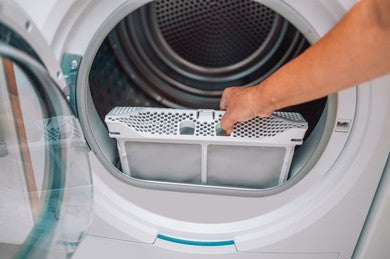
Top Signs Your Dryer Vent Needs Cleaning (and How to Prevent a Fire)
Share
Dryer fires are more common than most people think—especially during peak dryer seasons. The U.S. Fire Administration reports that approximately 2,900 residential dryer fires occur each year, resulting in around five fatalities, 100 injuries, and over $35 million in property damage.Among those incidents, failure to clean dryer vents is the leading factor, accounting for about 34% of all residential dryer fires.
During summer, when high temperatures already strain your appliances, a blocked dryer vent can quickly become a serious safety hazard. In this article, we’ll explore the key signs that your dryer vent needs cleaning, how lint buildup happens, and why regular maintenance is essential—especially this time of year.
Why Summer Increases the Risk
In many households, summer means more frequent laundry loads: think beach towels, sports gear, bedding, and pet hair. Combine that with heatwaves and poor airflow, and you’ve got the perfect storm for lint accumulation and overheating.
Dryer lint is highly flammable. When it collects inside the ductwork or lint trap, it restricts airflow and raises the internal temperature of your machine. That’s why a clogged dryer vent isn’t just inefficient—it’s dangerous.
Top Signs Your Dryer Vent Needs Cleaning
🔥 1. Clothes Take Longer to Dry
If your clothes are still damp after a full cycle, that’s a red flag. A blocked dryer vent reduces airflow, making your machine work harder and longer. This is one of the most common early signs of a clogged dryer vent hose.
🔥 2. Burning Smell or Excessive Heat
A strong, musty or burning odor while the dryer is running may mean lint is overheating inside the system. You may also notice that the machine or laundry room feels abnormally hot.
🔥 3. Visible Lint Buildup
Check around the lint trap, back of the dryer, and outside vent cover. If you see lint collecting outside the usual areas, it’s likely the interior is packed with debris.
🔥 4. Dryer Shuts Off Mid-Cycle
Many modern dryers are equipped with overheating protection and will shut off to prevent a fire. If this happens, don’t ignore it—it’s often caused by poor ventilation.
🔥 5. Outside Vent Hood Doesn’t Open Properly
When the dryer runs, the outside vent flap should open easily from airflow. If it barely moves or stays shut, airflow is restricted—probably due to internal lint buildup.
Where Lint Hides (And Why It’s Easy to Miss)
Even if you clean the lint trap after every load, lint still escapes into the duct system. It can collect in:
- The dryer hose
- Inside the dryer vent duct, especially at bends or elbows
- The vent exhaust outside your home
- Behind the dryer, where hoses connect
These are places a typical dryer lint brush or vacuum can’t always reach—especially if the duct is longer than 6 feet or runs vertically.
How Often Should You Clean Your Dryer Vent?
For most households, a full dryer vent cleaning should be done once every 6 to 12 months. You might need to clean it more often if:
- You have pets that shed
- You do laundry more than 5 times per week
- You notice any of the signs above
Using a dryer vent cleaner kit can help with basic maintenance between deep cleans. Tools like a dryer vent brush, dryer lint vacuum attachment, or dryer cleaning kit can remove lint from accessible areas and reduce buildup.
Simple Prevention Tips
- Clean the lint trap after every load
- Inspect the outside vent flap monthly to ensure it's opening properly
- Avoid overloading your dryer
- Use a vent cleaner periodically to remove hidden lint
- Never run the dryer when you're not home or sleeping
Final Thoughts
Summer is a great time to inspect your dryer vent system—not only because the weather makes it easier, but because your dryer is likely working harder than you realize.
By staying alert to the warning signs and doing routine maintenance, you reduce the risk of fire, lower your energy bills, and extend the life of your dryer. Whether you choose to DIY or bring in a professional, what matters most is not putting it off.
